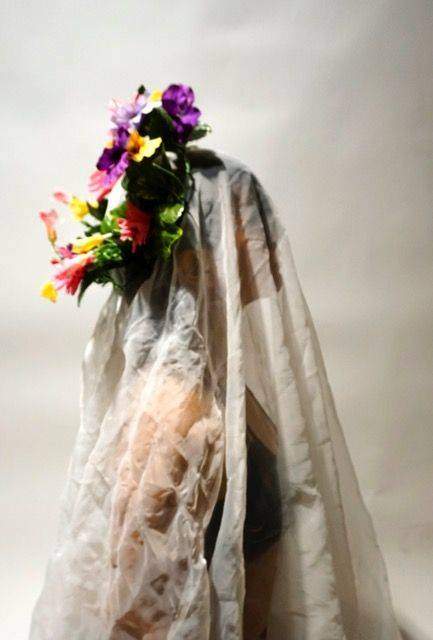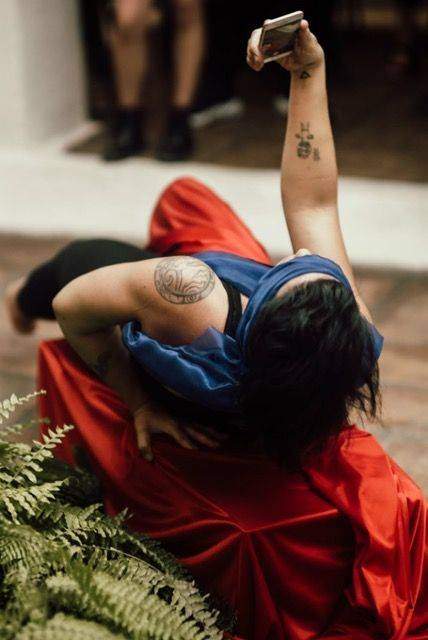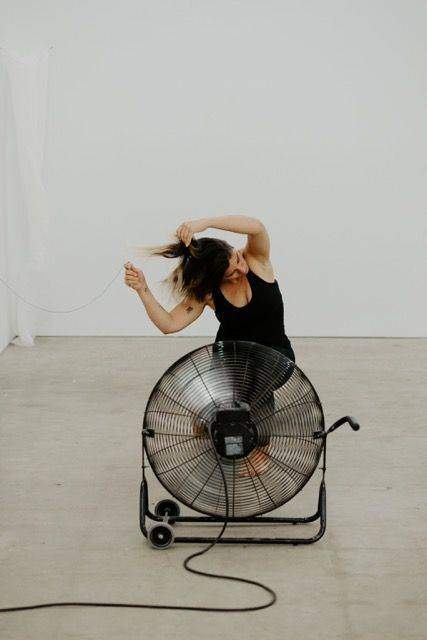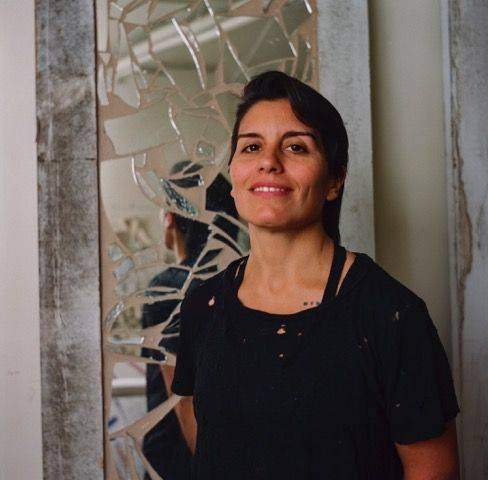
“Creative” and “artistic” might be the two most overused adjectives behind “genius.” There is most certainly a spectrum upon which these calibrate and you’ll find performance artist at the far end. This Argentinian talent is more known for the type of performances that elicit mass introspection than singing or tears; exactly as she’d like it to be. Modern-day finds nearly everyone believing that they are an expert photographer, filmmaker, or singer.
While Bianco would do nothing to dash these aspirations, she’s more interested in collaborating on an international level with other artists who inspire the thoughts which promote real change in society. We’re long past the decade when punk rockers were misunderstood for their social statements and visceral approach to art; Julia and her peers are perhaps the closest things we have to a modern movement that takes on the ills of the world and forces us to pay attention while absorbing its message over time rather than recognizing it immediately.
It’s this quality that has been inherent in the art which sustains and it is found abundantly in Bianco’s work. Describing the deep meaning for her personally, Julia expresses, “In the kind of performance that I make, I put myself in uncomfortable situations and deal with repetitive, exhausting, or sometimes extreme tasks in order to generate something within myself and in the audience.
Some people will say that performance is different from the theater because what we look for is to show our vulnerability and lean into the discomfort of a situation. My performances are hardly ever rehearsed beforehand to leave certain elements to chance. The idea behind performance art is for the artist to be fully present and to create in the audience a sense of presence different from our everyday lives.”

Edmonton Alberta’s Mile Zero Dance Society invited Ms. Bianco to present her art at the Zero Gravity International Performance Art Festival in 2019 due to her provocative and moving body of work. Julia was selected by board members of The Summit that include such luminaries as Artistic Director Gerry Morita (dancer, choreographer, performance artist, teacher, recipient of the Mayor’s Award for Innovation in Artistic Direction, the Edmonton Salute for Excellence, and the Edmonton Artists’ Trust Fund) and General Manager Kelly Ruth, known for her work with the Winnipeg Ballet.
Julia was selected from hundreds of artists for her profound artistic statements. The piece she presented at the event was known as “Sedal” whose name is taken from an Argentinian brand of women’s hair care and beauty products as well as a term used for fishing line. For this festival, Ms. Bianco donned an outfit that is worn by both dancers and as a mourning garb as she proceeded to brush her hair in front of a fan in a large room.
The reveal was that the comb was actually a razor comb, by means of which Julia cut her own hair during this performance. “Sedal” was a comment on the façade of unachievable beauty aspirations proposed by society and business. The artist states, “The message of this performance had to do with the liberation of a female body from the stigma of beauty, in this case, associated with the idea of hair.
Hair is considered a precious element and one that adds to the ideas of a beautiful woman, especially long hair and particularly in Western Modern culture. I wanted to create an act of liberation through working with symbols of western culture and breaking them.”

As with any art form, the manifestation of these works does not take place in isolation. Performance artists like Ms. Bianco are as inclined to collaborate as would a musician, a writer, or painters like Matisse and Picasso who fed off each other’s creations. Julia has found her counterpoint at times with performance artist Josh Rains.
Bianco highlights the benevolent differences that can become unifying in noting that Mr. Rains is a gay man from rural Oklahoma while she is a non-binary person of color from Argentina; the arts often feed upon what we have to share with each other rather than the idea of being exactly the same as those you associate with. This is an idea that makes for a more accepting society as well as intriguing art, as the works of Bianco and Rains have proven.
Their performance titled “Four” at performance art conference In Motion: performance and unsettling borders, Northwestern University in Chicago was so acclaimed that it was later presented via video at the performance conference Tijuana Performer (Tijuana, Baja California, México). The duo’s performance took place next to the blustery Lake Michigan in Chicago amidst the frigid temperature; enduring this for half an hour.
Donned in only black swimsuits, a nod to the costumes typically worn by professional dancers in their performances, Julia and Josh took turns protecting each other from Chicago’s freezing cold by performing different actions like holding hands, rubbing each other’s limbs and backs, and hugging. These two artists also collaborated on a piece titled “One”, presented at Collective Space & Spatial Collectives, Escuela Libre de Arquitectura, Tijuana, Baja California, Mexico.
This was part of a screening series organized by the Roundhouse Platform, a curatorial platform investigating the change in the cultural commons and urban sphere. In this series, Roundhouse proposed to explore the notion of “site” in an architectural context and beyond. In this video performance, artists Julia O Bianco and Joshua Rains can be seen taking turns carrying each other uphill at the site of the Hollywood Cross. This action was repeated for one hour, up to the point of exhaustion.

Julia is aware that some people will not instantly perceive the point of her art; an aspect of it that she finds encouraging. Her work is designed to elicit contemplation and discussion. There are numerous social statements in her work that exceed far beyond the physical discomfort that is visible when viewing her performances. Some of her upcoming projects include the participation of her piece “Victory”, a six-hour-long performance which takes place in a shipping container, as part of The Performance Arcade 2020, in Wellington, New Zealand.
The piece works with the iconic image of the Victory of Samothrace and makes an allusion to the smuggling of migrants and human trafficking in these structures. Another upcoming project is “Veiled”, a piece that will be presented at Highways Performance Space, and which will challenge ideas around femininity, sacredness, gender, and perspective. The artist stipulates, “A lot of my art practice, both as a visual artist and as a performance artist, is about un-becoming.
Living in two foreign countries has informed and expanded my practice out of a necessity to communicate a variety of experiences that I was not able to talk about through traditional art forms, like a painting. The constant and sometimes relentless discomfort of the migrant experience, the scarcities that this experience brings with it, and the challenges that I had to face (both material and emotional) have shaped my multidisciplinary practice into a process of constantly constructing and deconstructing meanings of self, to give an account of an identity that is constantly in motion.”
The influence of Ms. Bianco and the recognition of her talent is increasingly recognized throughout the art community; most recently by her reception of “The Armory Center for the Arts Teaching Artist Fellowship” presented to her by the Armory Center for the Arts in Pasadena. This year-long position interacts with Fellows with different groups of the younger generation.
For Julia, this was a way for her to continue to hone her communication skills with inquisitive and creative minds by working with underrepresented communities of children, facilitating dialogue and activities that connected them with a sense of self and empowerment. For Julia O Bianco, the true artist’s path is that of influence through creative innovation and powerful statements.
Writer: Cecil McCoy